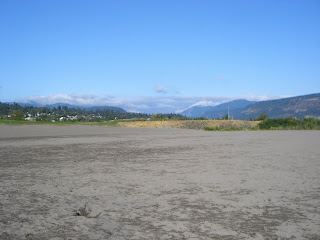Today was all about joy. When do we remember feeling true joy? What was that experience like? What do the Sutras and the Gita say about relieving unhappiness, pain, stress, and suffering? Today's training might have been called Yoga Psychology.
Lokah samasta sukhino bhavantu- may all beings everywhere know freedom and happiness; and may my own actions, words and deeds support that freedom and happiness.
The cause of all suffering, according to the Sutras and the Gita, are obstacles
(kleshas) : ignorance
(avidya), egoism
(asmita), excessive attachment to the pleasurable and impermanent
(raga), excessive aversion or hatred
(dvesa), and fear of death
(abhinivesa); and distractions
(antaryas), which cloud the mind and interrupt our self-reflective awareness and mental clarity. These
antaryas are disease, doubt, carelessness, laziness, sensuality (relying on sense encounters), false perception, failure to reach firm ground, and slipping from ground gained. So even back before the time of Christ, people were looking for ways to cure the human condition. This is why I feel that it's time for the world to learn yoga (note, I am not talking about
asana here; I'm talking about the practice of yoga off the mat as well as on). Our lives are so much more complicated now and we have so many sense distractions and means by which we come disconnected. And we see every day on the news the result of that disconnectedness.
Avidya is a big issue for me. Recognizing ignorance (note, ignorance here does not mean stupidity, it simply means lack of knowing or understanding) is a constant battle. When am I reacting to a situation I need to ask myself, am I seeing things as they really are? Is the person who's offending me really coming from a place of unhappiness, pain, stress, and suffering?
The way through suffering towards real joy is through our attitudes
(brahmavihara): through friendliness towards the joyful
(maitri), simply being in a positive place with a joyful or successful person; compassion for those who suffer
(karuna); celebrating (even delighting in) the good in others
(mudita); and healthy detachment from those who have harmed us through word, action, or deed
(upekshanam). So rejoicing with kind and happy people, viewing that person who suffers from the obstacles and the distractions with compassion, and putting up healthy constructive boundaries to honor ourselves in hurtful situations are all ways that we can reduce suffering in the world as we and others experience it.
I realize I am boiling this down a lot, but it's all very important stuff in the study of yoga and I want to get it all down now so I can remember it. The ideals described in the Gita and the Sutras are all ways to help us achieve true freedom and happiness, and they are meant to be seen as a work in progress. They recognize that we are all to one degree or another limited by one or more of the obstacles and distractions; it's our duty
(dharma) to work toward a more enlightened state through the practice of self-reflective study
(svadhyaya). It's perhaps most important that we remain compassionate toward ourselves during this process.
Our
asana today focused on opening the hips. We store a lot of emotion and stress and pain in our hips, and being seated for long periods only serves to lock in tightness in that area. We practiced
surya kriya again, a long lunge sequence, and several advanced poses including eight angle pose
(astavakrasana) and one foot to head pose
(eka pada sirsasana). I really enjoy hip openers- they're my favorite- so this was my favorite sequence so far.
We also prepped for headstand by trying it near a wall, and for the first time I held tripod headstand
(salamba sirsasana) away from the wall for close to a minute (I think). But I'm learning not to celebrate success in
asana too much; every day is different, and tomorrow I may have a different level of strength, balance, or flexibility. And for me, watching my neck is really important because of my history with injury to that area. So even the physical practice of yoga teaches us to regard ourselves with moderation, compassion, and respect.
After lunch, we invited 20 or so folks from other trainings to participate in chanting
(kirtan) which was wonderful... 50 plus people of all races and ages singing variations on
Om, om mani padme hum, il alaya al alayhu, shantih, shantih, and gloria in excelsis deo. It sounded like a symphony. Some people cried.
My most joyful times are when I'm honoring those things in myself and others. So if I continue to practice it, every moment has the opportunity to be my most joyful moment.



